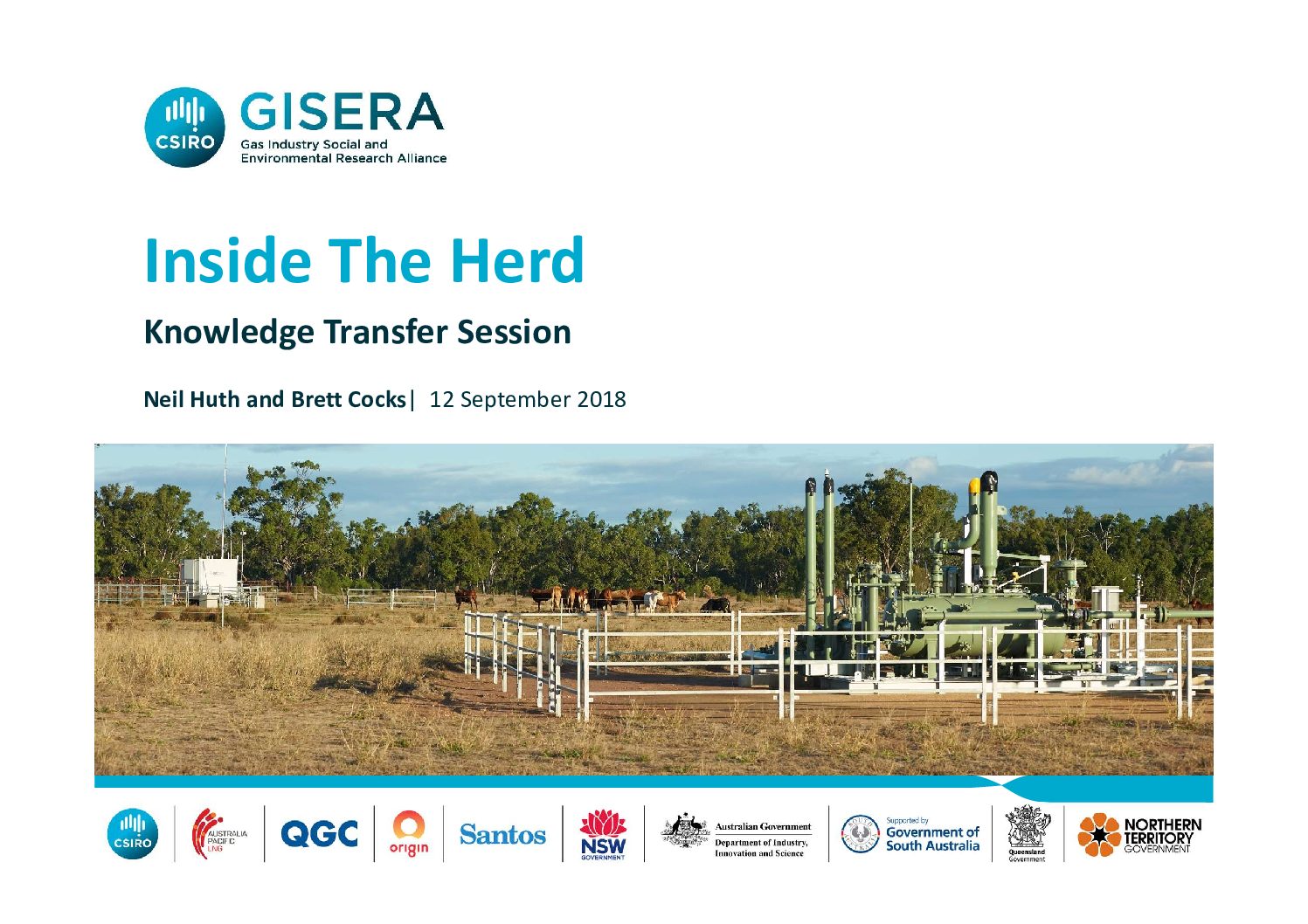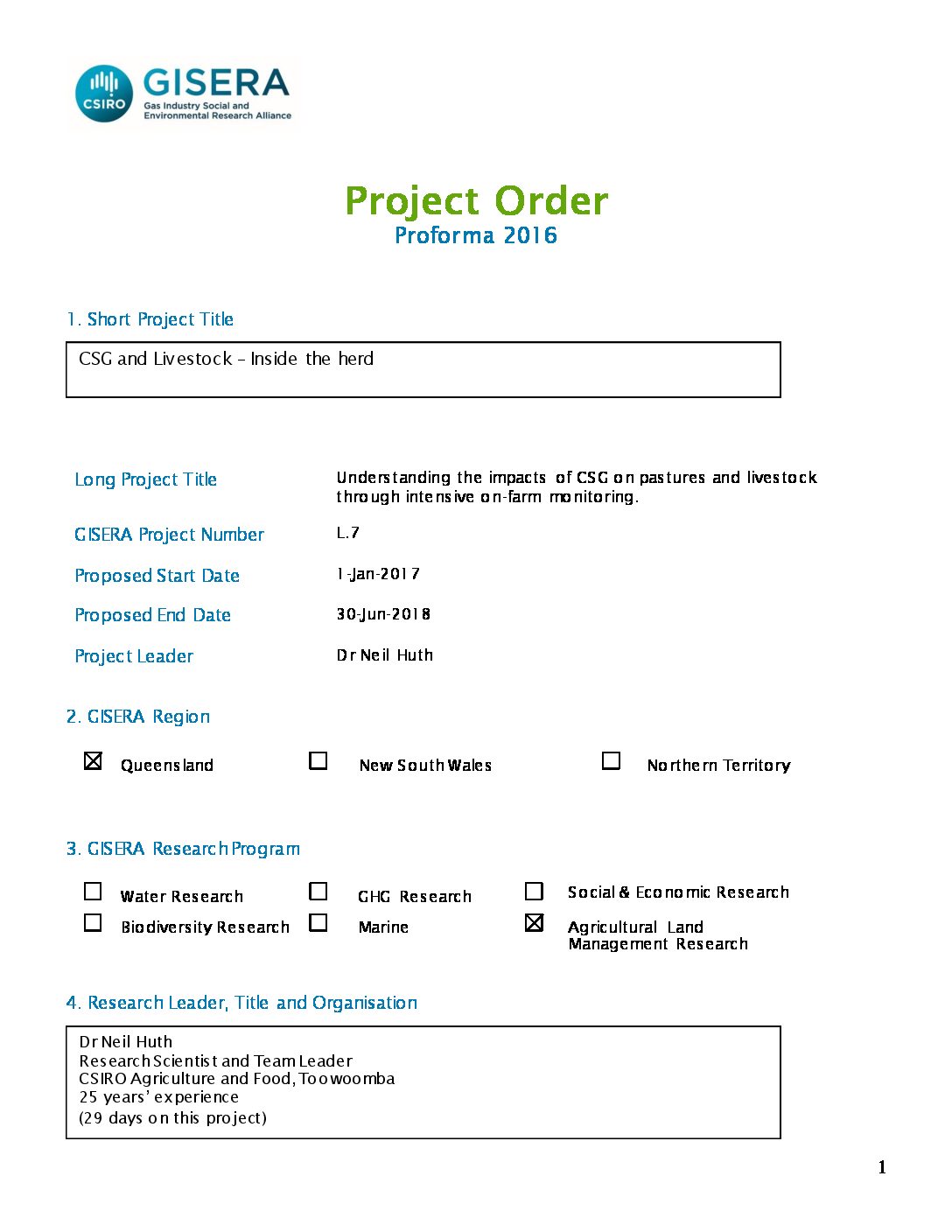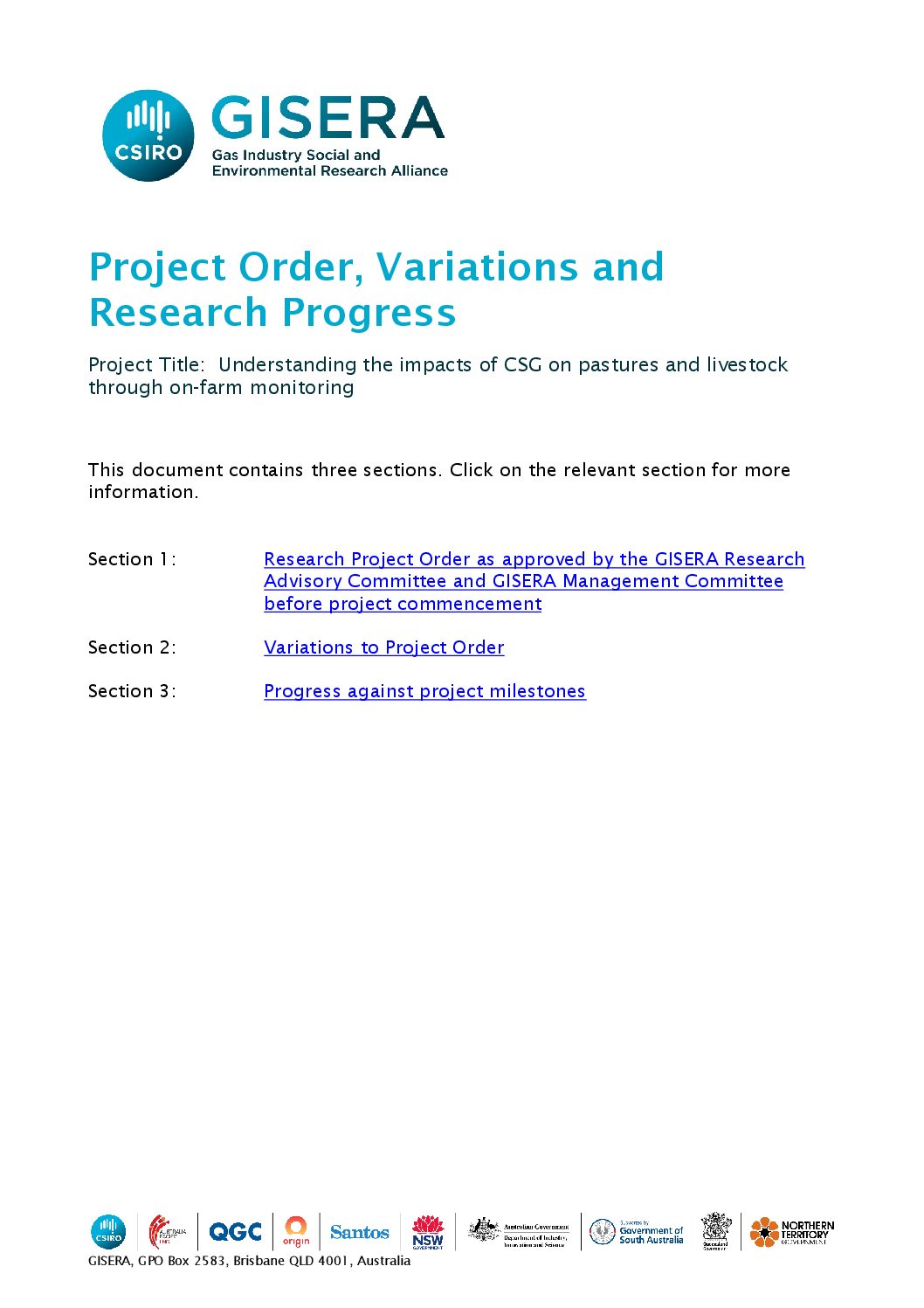Inside the herd
Monitoring grazing land with coal seam gas (CSG) infrastructure to better understand the impacts of infrastructure, traffic and dust on animals and pastures.
This research will provide detail of livestock behaviour, pastures, soil processes and dust deposition for a real CSG property.
Watch this short video to learn about the outcomes of the research.
Inside the herd Investigating the impacts of coal seam gas infrastructure, traffic and dust on animals and pastures September 2018
[The CSIRO, Australia Pacific LNG, QGC, Origin, Santos, NSW Government and Australian Government Department of Industry, Innovation and Science logos and text appears: GISERA, Gas Industry Social and Environmental Research Alliance, www.gisera.csiro.au]
[Music plays and text appears on a green screen: Inside the herd, Investigating the impacts of coal seam gas infrastructure, traffic and dust on animals and pastures, September 2018]
[Image changes to show the CSG site in amongst dry grassland and then the image changes to show cattle walking through the grassland and then gathering near the CSG site]
Neil Huth: The Inside the Herd Project is looking at the potential impacts of coal seam gas development on the soils, pastures and livestock in grazing systems.
[Image changes to show the cattle walking through the grassland in front of a row of trees and then the image changes to show a cream coloured cow in front of the CSG site]
Our previous research had been undertaken mostly on cropping lands and looking at rural communities.
[Image changes to show Neil Huth talking to the camera and text appears: Neil Huth, Senior Research Scientist, CSIRO]
This project is actually just targeting grazing systems and issues that are particular to these.
[Image changes to show grassland in the foreground and the CSG site in the background and then the image changes to show cattle under trees, and then cattle gathered near the CSG site]
We’re doing the research because farmers had highlighted to us previously the impacts of dust, light and noise on various parts of the farm business. S
[Images move through of a cow looking at the camera, Neil talking to the camera, two rotating 3-D landscape models, an aerial 3-D model of the landscape, and a livestock monitoring model]
o, what we have done is used a range of technologies from soil studies to building 3-D models of the landscape to look at water and erosion processes and individual monitoring of livestock using GPS systems to understand how they interact with CSG infrastructure.
[Image changes to show Neil talking to the camera]
We found the impacts that were probably not what we were expecting.
[Image changes to show cattle around the CSG site, and then the image changes to show a cream coloured cow in the foreground and the CSG site in the background]
For example, livestock were found to spend more time per hectare within the CSG footprint than they did on neighbouring open pasture.
[Image changes to show Neil talking to the camera]
It is hoped that the findings from this research will actually help farmers to understand some of the issues that they’re facing.
[Images move through of Neil seated at a desk in front of two screens having a conversation with another male, the male in the foreground listening while Neil talks, and Neil talking to the camera]
By having one on one discussions with graziers we will get this information in the hands of people who need this to better improve the design of CSG infrastructure in grazing systems.
[Music plays and the CSIRO, Australia Pacific LNG, QGC, Origin, Santos, NSW Government and Australian Government Department of Industry, Innovation and Science logos and text appears: GISERA, Gas Industry Social and Environmental Research Alliance, www.gisera.csiro.au]
Investigating impacts of coal seam gas infrastructure, dust and traffic on livestock and pastures, September 2018




